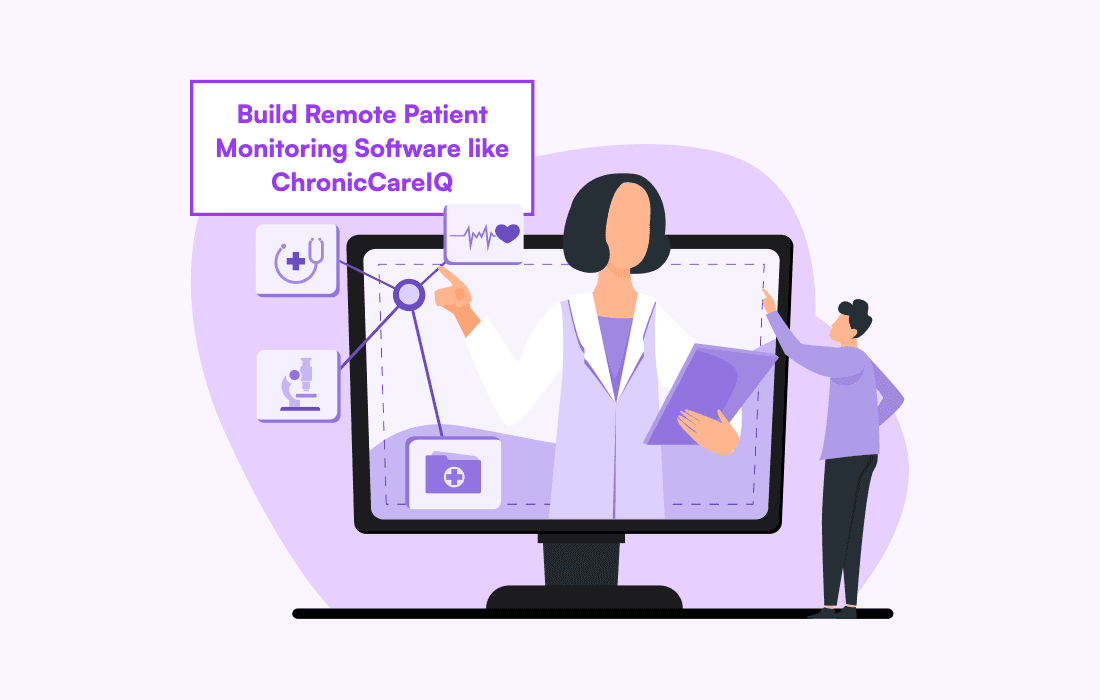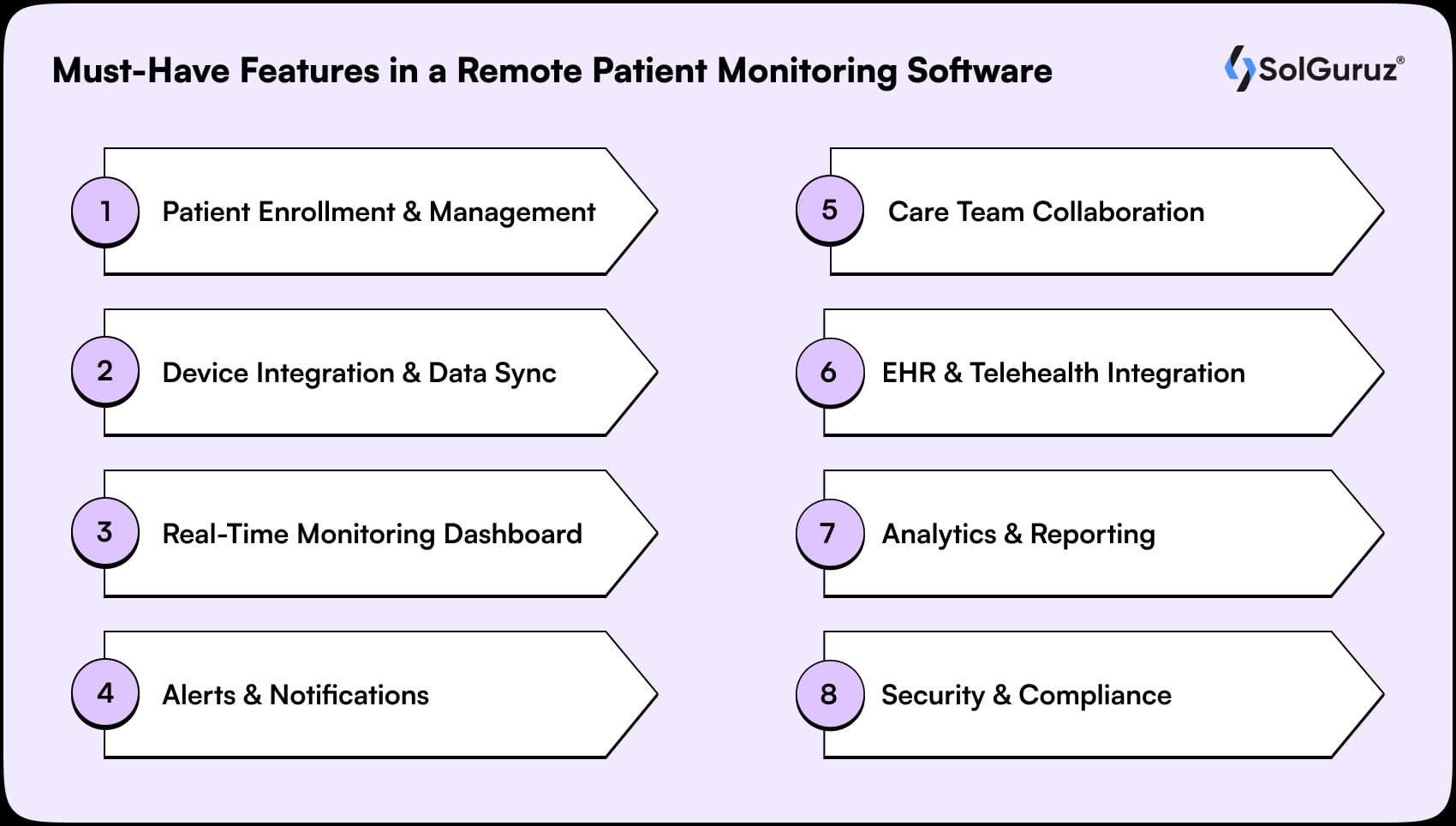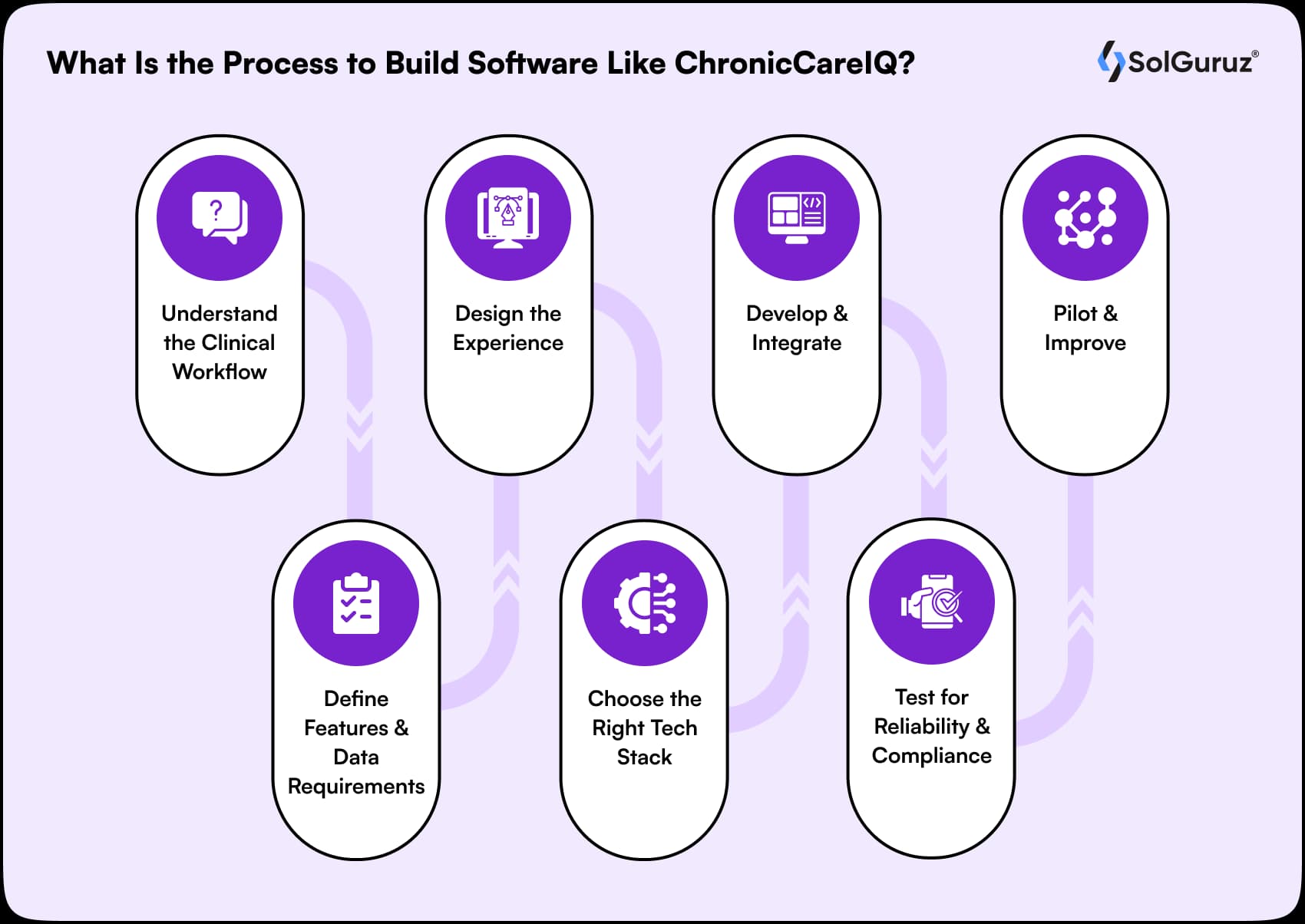How To Build a Remote Patient Monitoring Software Like ChronicCareIQ
Thinking of building remote patient monitoring software like ChronicCareIQ? This guide from SolGuruz breaks down what’s worth building, core features, a step-by-step process, and practical development costs. With insights from teams who’ve actually built RPM platforms for startups and healthcare providers.

Every few months, someone mentions ChronicCareIQ in a meeting.
And the conversation always goes the same way.
Half the room says, “That’s exactly what we need.”
The other half says, “Yeah, but can we build something like that ourselves?”
That question isn’t random.
Remote patient monitoring (RPM) has quietly become one of the most practical use cases in digital health.
We’ve been through that journey with healthcare teams trying to make it work.
And trust me, it’s not easy.
But it’s absolutely doable if you approach it the right way.
Let me share what it really takes to build remote patient monitoring software like ChronicCareIQ.
The features, the process, and what it’ll cost you to do it right.
Table of Contents
Is It Worth to Build a Remote Patient Monitoring Software Like ChronicCareIQ?
Short answer: yes. But only if you’re building it for the right reasons.
The thing is, remote patient monitoring is one of the few healthcare technologies that actually improves outcomes.
But building your own platform isn’t for everyone.
When it makes sense
- You want full control over workflows and features.
- You need deeper integrations with your existing EHR, wearables, or telehealth stack.
- You plan to scale across multiple care programs and don’t want vendor limits.
- You care about owning your IP instead of renting someone else’s product.
For digital health startups, that control means faster iteration and better long-term margins.
For providers, it means fewer compromises and lower recurring costs.
When it doesn’t
If you just need to launch an RPM program quickly or follow standard workflows, use an existing platform.
Building one from scratch takes time and money.
That’s why many businesses rely on healthcare software development firms to build their stuff.
Must-Have Features in a Remote Patient Monitoring Software

Building an RPM platform isn’t about adding more dashboards or flashy visuals.
It’s about making data useful. To the right person, at the right time.
Here are the core features that actually matter when you’re building something like ChronicCareIQ.
1. Patient Enrollment and Management
You need an easy way to onboard patients, assign care plans, and track active monitoring programs.
If your enrollment process takes more than two minutes, care teams won’t use it.
2. Device Integration and Data Sync
The software should pull vitals from connected devices without manual input.
APIs for Bluetooth and IoT device integration are the backbone here. If data syncing fails even once, you will lose all trust in one go.
3. Real-Time Monitoring Dashboard
Clinicians need a simple yet filterable view of all patients and risk alerts.
Don’t overcomplicate it. Color codes, trend lines, and “needs attention” tags are what actually help.
4. Alerts and Notifications
RPM works only when alerts are intelligent.
Avoid flooding clinicians with every data spike. Instead, use configurable thresholds and escalation rules to prioritize what truly matters.
5. Care Team Collaboration
Add notes, assign follow-ups, and share patient updates.
In practice, this replaces dozens of calls and spreadsheets.
6. EHR and Telehealth Integration
If it doesn’t connect with the existing EHR or teleconsultation tools, adoption will drop.
EHR sync keeps data centralized; telehealth integration closes the loop between monitoring and consultation.
7. Analytics and Reporting
You need to prove value. To both clinicians and payers.
Built-in analytics help track readmission rates, engagement levels, and billing compliance.
8. Security and Compliance
HIPAA compliance isn’t optional. Encrypt everything and ensure role-based access for all users.
You’ll thank yourself when you start onboarding enterprise clients.
What Is the Process to Build Software Like ChronicCareIQ?
Every RPM product starts with the same idea.
But what separates a working system from a failed one is how it’s built.
At SolGuruz, we’ve helped healthcare startups and providers go from napkin sketches to fully production-grade RPM platforms.

Here’s the process we follow (and the one we recommend if you’re serious about doing it right).
1. Understand the Clinical Workflow
See, before you write a single line of code, you need to talk to the people who will use it.
Nurses, coordinators, physicians, and everyone have a different view of “remote monitoring.”
Map their workflow first. Otherwise, your app will just add another screen to their day instead of removing one.
2. Define Features and Data Requirements
List the vital signs, patient types, and reporting needs.
Now, decide whether you will integrate devices like Omron or Fitbit. Or will you connect custom medical IoT sensors?
This clarity saves months of rework later.
3. Design the Experience (UX/UI)
Design isn’t just about colors and charts.
In RPM, it’s about reducing friction for both patients and clinicians.
Simple input forms, large, readable data, and automated reminders go a long way in driving adoption.
4. Choose the Right Tech Stack
Your backend needs to handle a lot of things. Like real-time data streams, secure storage, and integrations.
We usually use Flutter for cross-platform apps. Node.js for scalability, and AWS or Azure for HIPAA-ready cloud infrastructure.
Whatever you choose, build it with compliance in mind from day one.
5. Develop and Integrate
Once architecture is locked, move into agile sprints. It involves building, testing, and integrating modules step by step.
Typical integrations include Bluetooth APIs, FHIR-based EHR sync, and teleconsultation modules.
At SolGuruz, our teams usually parallel-track development and compliance testing to save time.
6. Test for Reliability and Compliance
Security, data accuracy, and interoperability matter more than fancy dashboards.
We run clinical workflow simulations, HIPAA validation, and penetration tests before even calling it an MVP.
7. Pilot and Improve
Once the platform is functional, launch it with a small set of patients or one clinic.
Get feedback from real users. Iterate fast.
RPM success depends on adoption, not feature count.
How Much Does It Cost to Develop Software Like ChronicCareIQ?
Let’s clear one thing up. There’s no flat number for building remote patient monitoring software.
The cost depends on what you’re building, who you’re building it with, and how deep your integrations go.
But here’s how we usually break it down for clients at SolGuruz.
|
Build Type |
Timeline |
Estimated Cost |
|
Basic RPM MVP |
3–4 months |
$10,000–$40,000 |
|
Mid-level Platform (EHR + Multi-device) |
5–7 months |
$40,000–$70,000 |
|
Enterprise-Grade Solution |
8–12 months |
$140,000+ |
Want Us to Help You Build Remote Patient Monitoring Software?
We’ve seen how complex healthcare tech can get.
But when you approach it with the right process and mindset, it actually works.
At SolGuruz, we’ve helped healthcare startups and hospital networks build digital products that are used by clinicians every day.
If you’re planning to build a product like ChronicCareIQ, we can help you:
- Scope the right MVP without overbuilding
- Architect a HIPAA-ready backend
- Design for both patient comfort and clinical efficiency
- Get to a working prototype fast
Let’s talk about your idea, your patients, and what kind of platform will actually move the needle for your care model.
FAQs
1. How long does it take to build remote patient monitoring software like ChronicCareIQ?
A functional MVP takes around 3–4 months if your scope is clear and integrations are limited. For enterprise-grade builds (multi-device, EHR sync, AI insights), expect 6–9 months. At SolGuruz, we usually aim to get a working pilot in front of clinicians within 12–16 weeks.
2. How do you ensure HIPAA compliance during development?
We usually start from day zero. That means every single encryption, access controls, or even secure third-party integrations are checked. At SolGuruz, we bake compliance into the architecture and run regular audits before any live deployment.
3. Can I integrate existing medical devices into my platform?
Yes, absolutely. Most modern RPM systems connect via Bluetooth APIs, Apple HealthKit, or vendor SDKs. We’ve integrated everything from Omron and Fitbit to custom IoT sensors for hospitals. Just make sure the devices are FDA-cleared and have open APIs.
4. How do I make sure clinicians actually use the platform?
Don’t build for “what you think they need.” Spend time shadowing care teams and mapping their daily workflows. We’ve seen adoption skyrocket when the platform reduces clicks, not adds more. That’s why at SolGuruz, we start every healthcare build with real user testing before development.
5. What’s the smartest way to start if I’m still validating the idea?
I will suggest that you don’t build the full product in one go. Ideally, you should start with a lightweight MVP. Once you validate engagement and outcomes, scale into multi-condition or enterprise use cases. That’s how we’ve helped several healthcare founders avoid burning 6 months on assumptions.
Thinking About Where to Start?
SolGuruz can help you validate your roadmap and a compliant MVP fast.

Strict NDA

Trusted by Startups & Enterprises Worldwide

Flexible Engagement Models

1 Week Risk-Free Trial
Give us a call now!

+1 (724) 577-7737


